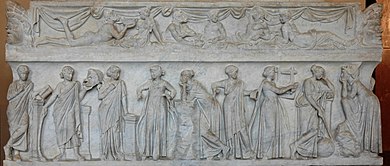

This article needs additional citations for verification. Please help improve this articlebyadding citations to reliable sources. Unsourced material may be challenged and removed.
Find sources: "Muses in popular culture" – news · newspapers · books · scholar · JSTOR (December 2012) (Learn how and when to remove this message) |

Representations or analogues of one or more of the nine MusesofGreek mythology have appeared in many different modern fictional works.
The list of Muses comprises:


|
The Nine Muses
| |
|---|---|
| Muses |
|
| Related |
|